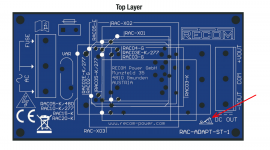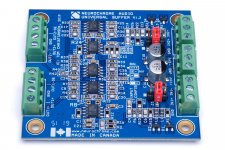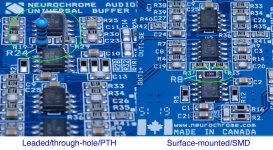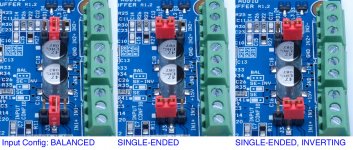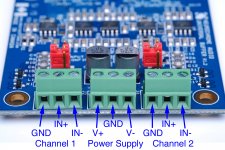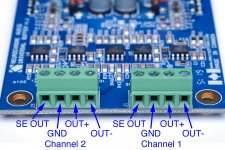RFI/EMI I don't know, but in DC/DC designer must handle Common Mode Output Noise, for sure. Have a look at section 5.3.2 Common Mode Output Filtering
I don't know that I'd use the word "must". As you can read in Section 5.3.2, the common-mode noise is only an issue if the load is asymmetrical. That said, as we don't have to worry about isolation (the supply providing the incoming DC takes care of that), it looks like three capacitors will alleviate the concerns regarding common-mode noise. Seems worthwhile to spend $0.30 (plus a little bit of PCB area) to make that problem go away.
Tom
Is it this combo of TDK-Lambda products you may be referring to?
I wouldn't go with an AC/DC module. That would defeat the "don't mess with the mains voltage" purpose. If I was going AC/DC, I might as well use a pair of IRM-15-15 and be done.
I'm thinking to use a DC/DC converter powered by a wall wart (or rather a desktop supply as it needs to be a bit beefy). This will leave all the mains wiring to the manufacturer of the wall wart (or desktop supply), which is attractive from a DIY point of view.
Tom
If I was going AC/DC, I might as well use a pair of IRM-15-15 and be done.
Got it. Selecting an IRM series +/-15V unit, the following four models are available that are in excess of the UB stated draw:
IRM-03-15: 0.20A
IRM-05-15: 0.33A
IRM-10-15: 0.67A
IRM-15-15: 1.00A
All of them have 200 mV p-to-p ripple, only the physical footprints and price are different as far as I can see. Those two variables aside, what is the minimum model of the 4 based upon output current would you select for building a Universal buffer; 1 pair balanced in/1 pair balanced out, 6dB of gain and a small front panel mounted LED. No other inputs, volume control, etc.
If you run the Universal Buffer to clipping, you should expect about 100 mA current draw per board. For powering just one board, a 3W or 5W switcher would be fine. So IRM-03-15 or IRM-05-15. I don't have a strong preference between the two.
Note that the medical MPM-series offers lower ripple.
Tom
Note that the medical MPM-series offers lower ripple.
Tom
Yes, the Recom look very nice. And check out this universal adapter board they have to mount most of their modules. $14 on Mouser.
Nice!
These Recom ac/dc converters and mounting pcb will make for a super easy and convenient psu to have in any Diy’ers toolbox. Thanks fellas
Neat. And a good price too. I'd add a few features, such as output filtering, power-on LED, and low-voltage power on/off control.
I wonder what the plane signifies.
Tom
Trim?
I wonder what the plane signifies.
Tom
Ripple remover?
A couple of figures from the design documentation. Hopefully they'll help shed some light on the various options for input configuration and gain resistors.
Tom
Tom
Attachments
This is glaringly obvious from John Siau's work on the Benchmark LA4 preamplifier. They had to design a pretty tricked out relay based volume control and from his comments it was somewhat of a challenging exercise.
Putting together a relay attenuator with virtually immeasurable distortion is trivial, it boils down to resistor distortion and very simple choices. Benchmark may have spent some time scratching their heads how to make the steps silent and smooth but certainly not fighting distortions.
The practically complete lack of distortion in most resistor based switching attenuators does not in any way mean they sound the same or even similar, but this is of course not a topic for this thread.
Looks good!
I'm planning to use the buffer as a laboratory buffer/pre-amp for various measurements, including PSU noise. For the latter I will need to AC couple the inputs. I see in the specs that the input impedance is 48k so I was thinking that a series 1uF cap could do the job (fc = 3.3Hz). Do you have any advise in this respect?
Thanks!
I'm planning to use the buffer as a laboratory buffer/pre-amp for various measurements, including PSU noise. For the latter I will need to AC couple the inputs. I see in the specs that the input impedance is 48k so I was thinking that a series 1uF cap could do the job (fc = 3.3Hz). Do you have any advise in this respect?
Thanks!
- Home
- Vendor's Bazaar
- Universal Buffer achieving -140 dBc (0.00001 %) THD

